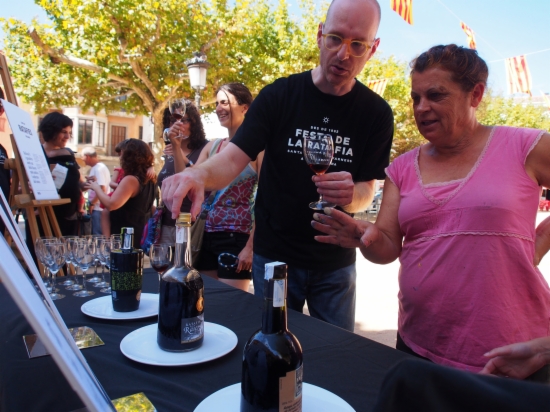Ratafia: Catalan liqueur gaining popularity among Gen Z
Centuries-old sweet beverage seeing resurgence as way to embrace rural roots

Santa Coloma de Farners, a town near Girona in northeastern Catalonia, proclaims itself the world capital of ratafia. This ambitious title acknowledges years of efforts to recover and popularize this alcoholic beverage, a sweet liqueur made from brandy and a mixture of over 50 herbs, including lemon peel, nutmeg, and cinnamon. Once the mixture is made, it is left to macerate for 40 days in the sun, although it is filtered at least a couple of times.
With an alcohol content of 20%, it is not usually drunk to get tipsy, but rather as a celebration of the region's rural roots. What is interesting about ratafia is that it has managed to go from a drink primarily enjoyed by rural farmers to one that is now enjoyed by Gen Z too as both older and newer generations have come to value this symbol of Catalan tradition.
There is no trace of ratafia's exact origins since it has been passed down from generation to generation and evolved as a recipe. However, it is believed to have originated in medieval Europe as a medicinal tonic containing herbs and alcohol before eventually, becoming a sweet liqueur enjoyed as a digestif.
Annual ratafia fair
The growing popularity of this beverage is reflected in the ratafia festival held every November in Santa Coloma, organized by the Confraria de la Ratafia, a non-profit organization that aims to preserve the traditional beverage. Laia Jiménez, the president of this organization, told this media outlet that edition after edition, the festival gathers more and more people – 50,000 at the most recent one – from all parts of the territory, with the town now trying to make it a part of its appeal to tourists.
The main event over this crowded weekend is the contest, where an expert jury tastes the ratafia participants prepare throughout the season. Making the beverage is not simple, requiring a family recipe passed down from generation to generation and often shrouded in secrecy.
The town also hosts ‘El Mercat de les Herbes’ the first weekend of May, a fair in which people can buy all the herbs required to make the drink and participate in many activities and workshops related to herbalism.
Ciseta Camps, who has been preparing this liqueur for over 50 years and now finds the process difficult due to her age, enjoys teaching her tips and tricks to anyone who is interested. According to Camps, "recipes vary slightly from family to family, but the essence lies in finding a balance among the more than 50 herbs that are infused."
She is happy to see how the number of bottles submitted to the annual contest has grown, saying, "It's fabulous that there is a group of people who want to learn because they keep the tradition alive. Until recently, many young people didn't even know its name, and now it's a big fair." In the first years, there were only between 12 and 18 bottles submitted in the contest, and "being able to have up to 214 in the latest editions is a great source of pride," she adds.
New generation willing to carry on tradition
Young people's willingness to carry on the tradition is key to the success of the drink's social recognition, according to Ciseta Camps and Laia Jiménez. Pau Pujol, Ernest Morell, and Pau Torra are an example of this phenomenon. This group of young people founded La Sobirana, a cooperative born in 2018 to bring this sweet beverage to as many people as possible that also produces its own ratafia, which can be found in many local stores.
Although they celebrate that this liqueur has become fashionable, they want to distance themselves from a reductionist view that understands the fondness of ratafia simply because it is a typical Catalan drink. "We would like everything behind the drink to be understood, that is, the link with the landscape and the use of the environment to make it increasingly prestigious," they state.
The Confraria also seeks this prestige, with its president emphasizing the importance of keeping the essence of this liqueur alive throughout the year, taking advantage of the fact that its production is closely linked to the changing seasons.
Ratafia hits headlines
Former president of Catalonia Quim Torra, who is a resident of the town, has also participated in keeping the tradition alive.
During his first official meeting with Spanish prime minister Pedro Sánchez in 2018, Torra presented him with a bottle of the aforementioned beverage as a gift. In subsequent interviews with the media, Torra explained the significance of the gift, stating that it is "a symbol of how to care for the country and its landscapes."
While the beverage has gained popularity in recent years, for the inhabitants of Santa Coloma de Farners, it is not simply a trend, but rather an ode to their land and roots.